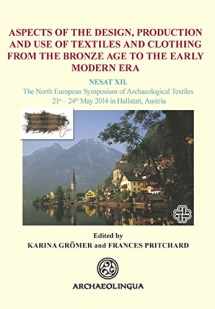
Aspects of the Design, Production and Use of Textiles and Clothing from the Bronze Age to the Early Modern Era: NESAT XII. The North European ... Main Series) (German and English Edition)
Book details
Summary
Description
The North European Symposium for Archaeological Textiles (NESAT) was founded in 1981 as a discussion forum between various disciplines: textile archaeologists, historians, art historians, natural scientists, conservators and craftspeople. The NESAT XII symposium was organized by the Natural History Museum Vienna from 21st to 24th May 2014 in Hallstatt, Austria. The venue of the 12th Symposium was chosen on account of the archaeological heritage of Hallstatt as well as the flora and fauna of the whole region, which is designated in the UNESCO World Heritage list.
The conference volume contains 35 scientific papers grouped into seven chapters. The first chapters introduce Austrian textile research and prehistoric textile finds from Europe, such as recent analysis of the earliest wool finds and early Scandinavian textile design. The main corpus of articles deals with textiles and clothing covering a time span from early medieval to the early modern period, their archaeological research, experiments and art historical context. Five papers focus on tools and textile production, object-based research as well as experimental archaeology and investigation of written sources. The chapter “Specific analyses” embraces interdisciplinary research including dyestuff analysis, isotopic tracing and a drawing system for archaeological textile finds from graves.
The book, therefore, provides a wealth of information on recent research being undertaken into archaeological textiles from sites in northern Europe.


We would LOVE it if you could help us and other readers by reviewing the book
Book review



